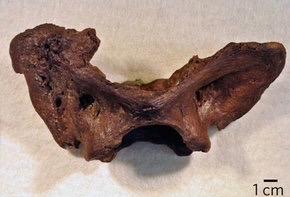Simanaitis Says
On cars, old, new and future; science & technology; vintage airplanes, computer flight simulation of them; Sherlockiana; our English language; travel; and other stuff
ROMANCE OF THE SABRE-TOOTH CAT
LA BREA Tar Pits of 12,000 years ago are linked to a 1942 Romance of the Ranchos radio program and also to The New York Times published only yesterday.

A 1911 drawing of a sabre-tooth cat and a dire wolf battling over a mammoth carcass in La Brea Tar Pits. Image by Robert Bruce Horsfall.
The article by Nicholas St. Fleur in The New York Times, April 12, 2017, is titled “Saber-Toothed Cats Paid a Stiff Price for Lunch.” It describes how many of these carnivores, Smilodon fatalis, and their prey got caught up in the asphaltic mire of La Brea Tar Pits, now an attraction in Hancock Park, Los Angeles.
By the way, the sabre-tooth/saber-toothed tiger/cat isn’t closely related to the domestic cat, Felis catus, nor to the modern tiger, Panthera tigris. Its nearest modern relative is likely the clouded leopard, Neofelis nebulosa, living in the Himalayan foothills.

A clouded leopard, Neofelis nebulosa, a possible close relative of the prehistoric sabre-tooth cat. Image by Charles Barilleaux.
La Brea Tar Pits evolved some 50,000 years ago, a seeping up through the ground of asphaltum, bitumen and pitch. Brea is the Spanish word for tar; thus, literally, “the La Brea Tar Pits” means “the the tar tar pits.”
Hancock Park is located within what was once Rancho La Brea, a 4400-acre land grant established in 1828. Other portions of that New Spain land grant now include Los Angeles’ Wilshire Miracle Mile and portions of West Hollywood.
Which brings me to the Romance of the Ranchos. This vintage CBS Pacific radio program, broadcast now as part of SiriusXM’s “Radio Classics” channel, described the land grants and how they evolved into modern, that is to say 1940s, California.

Romance of the Ranchos sponsored by Title Insurance and Trust of Los Angeles ran on CBS Pacific, 1941–1942.
The episode on La Brea Tar Pits, originally broadcast April 19, 1942, was unique in its time-frame extending back 10,000 years to the days of the sabre-tooth cat. Bones preserved in the mire tell a tale of prehistoric life and death.
Others of these bones have been studied by Caitlin Brown, a doctoral candidate at the University of California, Los Angeles. She’s the lead author of the paper “Skeletal Trauma Reflects Hunting Behavior in Extinct Sabre-Tooth Cats and Dire Wolves” in the journal Nature Ecology & Evolution.
As described in The New York Times article, Brown and her colleagues focused on these two predators, the sabre-tooth cat and dire wolf, Canis dirus. The researchers began with a collection of more than 35,000 specimens from La Brea Tar Pits. Of these, some 2000 bones had previously been identified with signs of trauma.

A bone preserved in La Brea Tar Pits. This and the following from the Nature Ecology & Evolution paper by Brown et al.
“Most of the injuries we found were not broken bones or signs of major trauma,” Brown said, “they were signs that the muscles were overworked or arthritis was in the area.”
Computer software designed to map concentrations of crime in cities was used to identify injury hot spots for the two predators. Sabre-tooth cats more likely injured their shoulder blades and lower thoracic and lumbar vertebrae than other bones. By contrast, dire wolf injuries concentrated on cervical vertebrae, ankles and toe bones. In summary, 56 percent of all injuries on the sabre-tooth cat were spinal, most of them in the lower portions. About 65 percent of dire wolf injuries occurred in the limbs, mostly the paws.
Like La Brea Tar Pits struggles described in Romance of the Ranchos, Brown and her colleagues imagined a sabre-tooth cat damaging its shoulders and lower back while it twisted and turned in wrestling its prey to submission. A dire wolf, by contrast, may have had its limbs stepped on or kicked by prey during the chase.
Ain’t science neat? ds
© Dennis Simanaitis, SimanaitisSays.com, 2017




Interesting as usual. “The the tar tar pits” reminds me of my time back in the early ’80s as a dishwasher at the Denny’s up the street from my folks house. In the stock room we laughed at the people who produced and sold cans of “Chili con Carne with meat” (Chili with meat with meat). We gringos embarrass ourselves so often.
It helped me in my research. Appreciate the effort.
Glad to help.